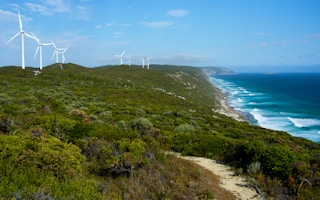This Federal Budget was crafted with multiple, sometimes conflicting, objectives. To repair the budget, to neutralize some of the Opposition’s initiatives, to address some tax pressure points-such as bracket creep, globally uncompetitive corporate tax, multinationals that don’t pay enough tax, etc.-to be seen as “fair”, and to declare a plan for “jobs and growth” as a platform to launch the Government’s campaign for its planned double-dissolution election on July 2.
Given a flat and risky global economy, a flat domestic economy, and certain policy constraints - mostly self-imposed, as the Turnbull Government progressively removed a host of options from its policy table - the Budget is, at best, a “nod and a wink” in the broad direction of each of these objectives, falling well short of genuine reform in any of them, with some significant trade-offs having had to be made.
The flatness of our economy was emphasised by the Reserve Bank of Australia’s decision to cut the official interest rate, unusually on Budget day. Although far too late as usual (indeed waiting until they actually got a negative inflation number to respond), the RBA really had to cut now, rather than wait until next month, which would have been criticised for being done in the midst of an election campaign.
Unfortunately, Treasury seems to have failed to understand the significance of deflation, and its longer-term consequences for RBA policy, and again seems to have overestimated growth through the Budget period. However, this interest rate cut, and further cuts that are sure to follow, will probably have little significant impact on future growth, as has been evidenced by overseas experience.
The global economy is also much flatter and riskier than recognised in the Budget figuring. The IMF continues to downgrade its global growth forecasts as Europe struggles to sustain even a weak recovery, without deflation; the US economy is also weakening, with the overhanging threat that the Fed may raise rates; Japan is sliding back into recession; China is slowing much more than admitted – with growth closer to 5 per cent rather than 7 per cent; and most emerging economies at or near recession, except India; all compounded by a host of geo-political tensions, mass migration in Europe, and so on.
World trade fell by nearly 14 per cent last year, and global policy authorities have virtually exhausted their policy options/flexibility, with many still holding to near zero or negative interest rates, and still carrying significant fiscal deficits and large debts, with virtually no historical experience to draw on to determine a way forward. Global growth can be expected to remain quite flat for years to come, with sizeable downside risks.
Against this background, the Budget is mostly “steady as she goes”, just “treading water”, with minimal cuts in spending, minimal increases in tax, and a slow return to surplus, to occur mostly due to assumed strong growth.
Moving on from the “Budget emergency/debt and deficits” rhetoric, the budget repair task is basically kicked down the road, with a claimed return to surplus delayed until early next decade, but still with very significant unfunded spending commitments in health, education, defence, NDIS, the NBN and other infrastructure.
The sum of deficits in recent years since the GFC already exceeds the sum of the run of deficits (relative to GDP) from either the 1982-83 or 1991-92 recessions. Australia faces a very significant structural deficit that is not being addressed effectively.
“
Indeed, the only significant climate-related initiative in the Budget was a negative – a cut of $1 billion in the funding for the Australian Renewable Energy Agency.
Funded spending, as a percentage of GDP, is still above both the Kevin Rudd and Julia Gillard eras, falling to only 25.2 per cent of GDP by the end of the Budget period.
The tax reductions are focused on small business, with a notional break on bracket creep for those on middle-incomes earning between $80-87,000, funded by assumed gains (exaggerated) from a Google tax on multinationals, a reduction in superannuation concessions for high income earners, and increased tax on smokers.
With most major tax reform possibilities having been taken off the table, the tax changes are mostly tinkering, not broad-based reform.
The Budget will be seen to be “unfair” as those earning under $80,000 – some 75 per cent of taxpayers – get no tax cut, but some of the old cuts, in welfare and family benefits, higher education, and vocational training are still carried forward, and promised childcare benefits have been delayed.
While the focus of the Budget has been claimed to be on the “transition” in our economy from one based on a resources boom, to whatever, and while the key Budget slogan is “jobs and growth”, we are provided with no detail of the “whatever”, or how and from where, the jobs and growth will come from.
It was most revealing that there was no mention of an obvious growth sector, namely the renewable energy sector, including alternative technologies and energy efficiencies, especially against our Paris commitments on emissions reductions which impose an urgency about this transition. Indeed, the only significant climate-related initiative in the Budget was a negative – a cut of $1 billion in the funding for the Australian Renewable Energy Agency.
There was also no recognition of the particular transition difficulties of the manufacturing sector.
The economic forecasts suggest a sizeable improvement in the terms of trade and a sizeable pick up in non-mining investment as the declines in mining investment come to an end. It’s not clear how, and with the exchange rate assumed still at 77 cents.
Presumably, the jobs and growth are to come from the tax cuts on small business? But these businesses need to be profitable, in an environment of strengthening consumer and business confidence, neither of which is evident, especially with an election just around the corner.
![]()
John Hewson is professor and chair, Tax and Transfer Policy Institute, Crawford School, Australian National University. This article was originally published on The Conversation.











